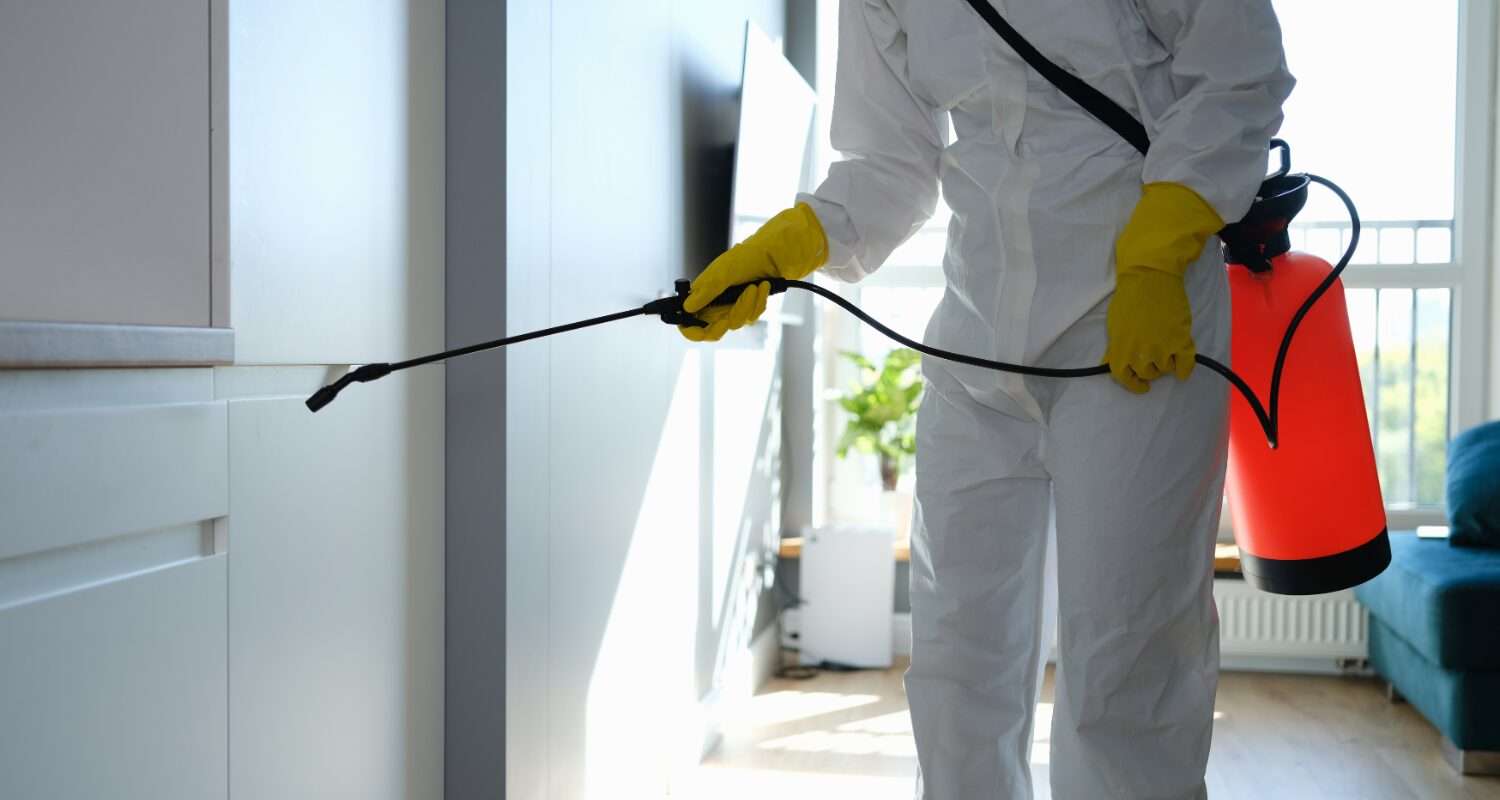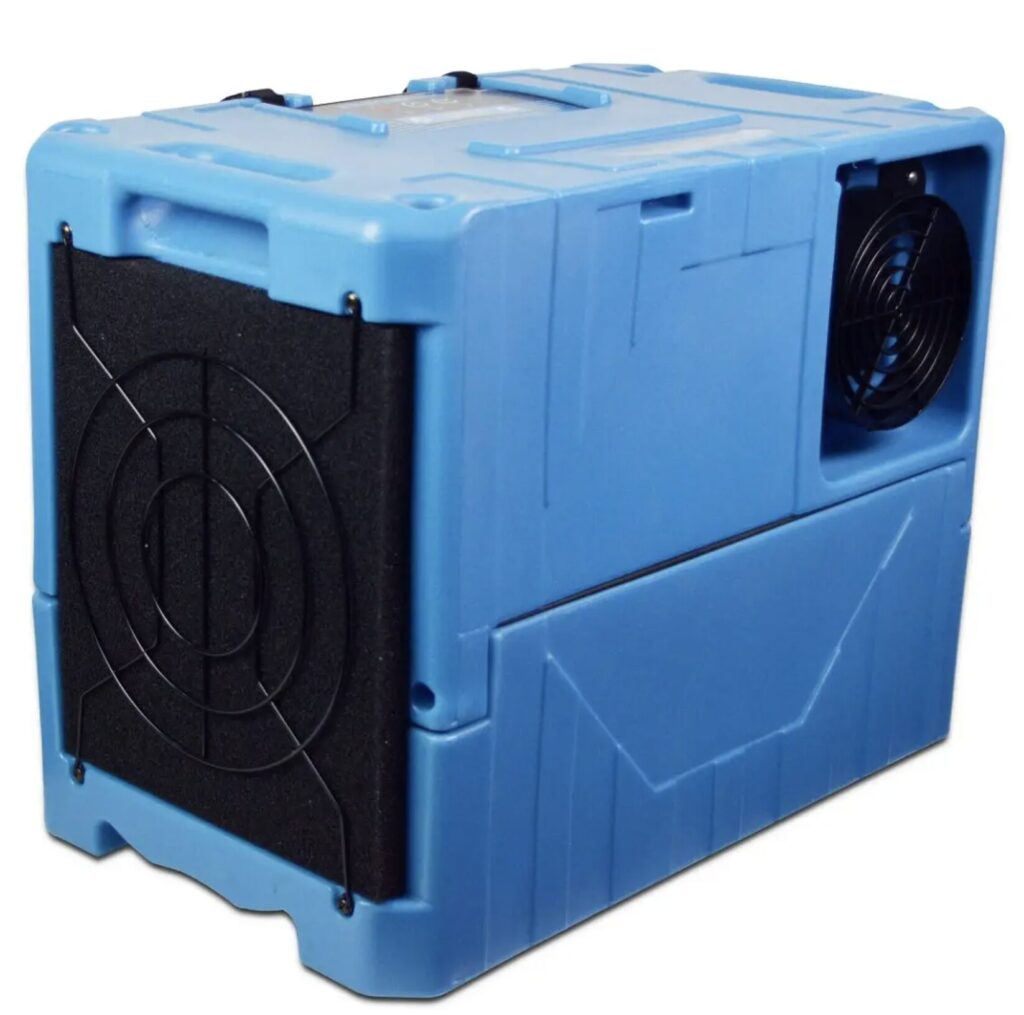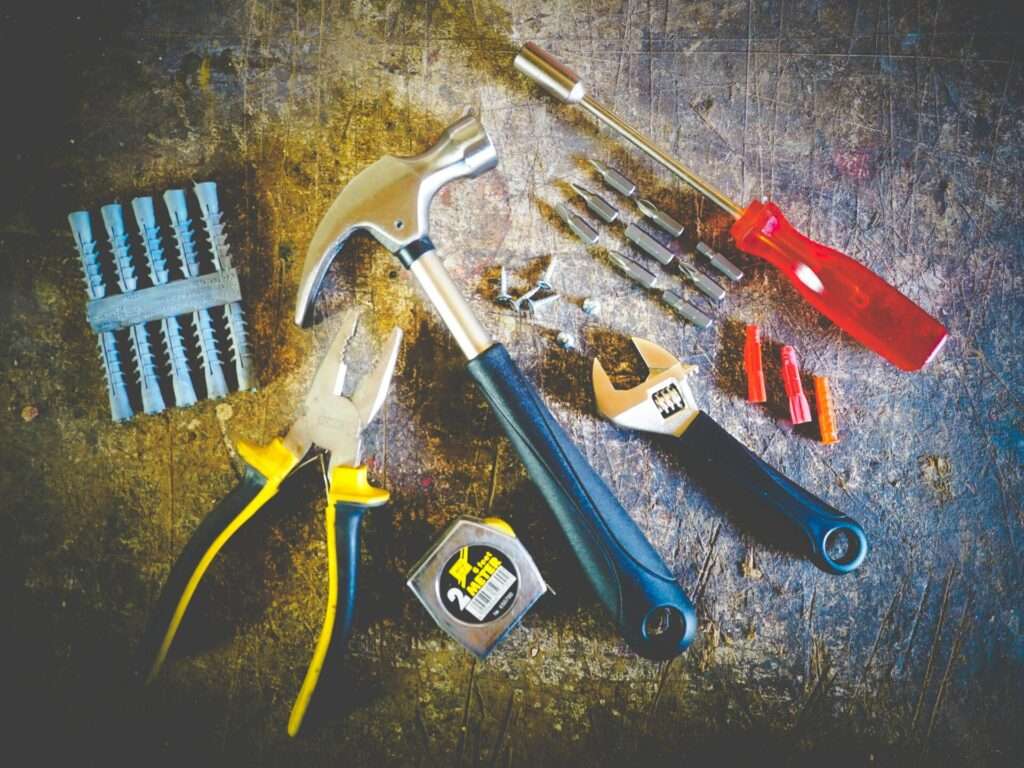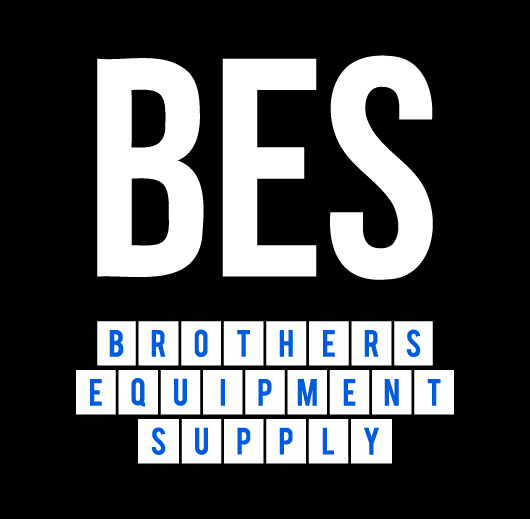
The Best Commercial Water Damage Equipment For Large Jobs
The Best Commercial Water Damage Equipment For Large Jobs
By: Brothers Equipment & Supply
When it comes to large-scale water damage restoration projects, having the right equipment is critical.
Whether you’re dealing with flooding, burst pipes, or storm damage, using commercial-grade water damage equipment ensures efficient water removal and proper drying to prevent further damage.
This article will explore the best commercial water damage equipment for large jobs, focusing on the tools and technology professionals need for successful restoration.
Let’s get right into it!
Understanding The Importance Of Proper Equipment For Water Damage Restoration
Why Proper Equipment Is Essential For Large Water Damage Jobs
Water damage can escalate quickly, causing significant structural damage, mould growth, and health risks if not addressed promptly. For large jobs, residential equipment simply won’t cut it. Commercial-grade water damage equipment is designed for high performance, allowing contractors to handle vast spaces and severe water exposure more efficiently.
According to the Insurance Bureau of Canada, water damage accounts for almost half of all property insurance claims. Therefore, proper equipment is essential in minimizing damage and accelerating the drying process.
Challenges Of Large-Scale Water Damage Restoration
Large-scale water damage jobs often involve multiple floors, large areas, and varying types of materials that absorb moisture differently. These challenges require robust equipment capable of handling large volumes of water quickly.
Additionally, different types of water damage, such as clean water, grey water, and black water, each require specific equipment and treatment methods to ensure safe and thorough restoration.
Types Of Commercial Water Damage Equipment
Water Extraction Machines
Water extraction is the first and most critical step in water damage restoration. Commercial water extractors are designed to remove standing water quickly from large areas. These machines are often equipped with high-powered suction capabilities to deal with heavy flooding.
Dehumidifiers (Desiccant Vs. Refrigerant)
After the water is extracted, drying out the remaining moisture is essential to prevent mould growth and structural damage. Commercial dehumidifiers come in two types: desiccant and refrigerant. Desiccant dehumidifiers are ideal for colder, larger spaces, while refrigerant dehumidifiers are more effective in smaller, warmer environments.
Air Movers And Fans
Air movers and fans play a crucial role in drying surfaces by circulating air across wet floors, walls, and ceilings. These devices speed up evaporation, helping to dry out materials quickly and efficiently.

Air Scrubbers And Purification Systems
Restoring air quality is just as important as removing water and drying the affected areas. Air scrubbers equipped with HEPA filters can remove airborne contaminants such as mould spores, dust, and bacteria that may have been disturbed during the restoration process.
Moisture Meters And Sensors
Accurate moisture monitoring is vital in large water damage jobs to ensure that all areas are properly dried. Moisture meters and sensors allow restoration professionals to measure the moisture content in materials like wood, drywall, and concrete.
Water Extraction Machines: The Backbone Of Large Water Damage Jobs
Truck-Mounted Extractors Vs. Portable Extractors
For large water damage jobs, truck-mounted extractors are the preferred option due to their superior power and capacity. These machines can remove hundreds of litres of water per minute, making them ideal for large commercial spaces. Portable extractors, while less powerful, are useful in areas where truck-mounted equipment cannot reach.
Features To Look For In Commercial Water Extractors
When choosing a water extractor, look for features like high suction power, large tank capacity, and easy portability. Some commercial models also include heating elements to help dry surfaces faster.
Top Water Extraction Machines For Large Jobs
Top-rated commercial water extractors include models like the HydroForce Extractor and the Dri-Eaz HVE 3000, both known for their powerful performance and durability in large restoration projects.
Dehumidifiers: Key To Removing Excess Moisture
The Role Of Dehumidifiers In Preventing Mould Growth
Excess moisture left behind after water extraction can lead to mould growth within 24-48 hours. Dehumidifiers help remove this moisture from the air and materials, preventing the spread of mould and other bacteria.
Desiccant Dehumidifiers: Best For Large Commercial Spaces
Desiccant dehumidifiers work by using chemicals that absorb moisture from the air. These dehumidifiers are especially useful in large commercial spaces and colder environments, where refrigerant dehumidifiers may not function as effectively.

Refrigerant Dehumidifiers: Efficient For Smaller, Warmer Areas
Refrigerant dehumidifiers use cooling coils to condense moisture from the air, making them highly effective in smaller, warmer spaces. They are ideal for drying areas like offices or apartment units within larger commercial buildings.
Recommended Commercial Dehumidifiers For Large Jobs
Top commercial dehumidifiers include the Dri-Eaz LGR 7000XLi and the Phoenix D385. These models are known for their high efficiency, durable design, and ability to handle large-scale water damage jobs.
Air Movers And Fans: Drying Surfaces Quickly And Efficiently
The Role Of Air Movers In Water Damage Restoration
Air movers increase the rate of evaporation by circulating air across wet surfaces. They are an essential tool in drying carpets, walls, and floors after water extraction.
Types Of Air Movers (Axial Vs. Centrifugal)
There are two main types of air movers: axial and centrifugal. Axial air movers are designed for high-volume air movement over large areas, while centrifugal air movers are more focused, ideal for targeting specific areas like under carpets or furniture.
How To Position Air Movers For Maximum Effectiveness
Proper positioning of air movers is crucial for optimal drying. Placing air movers at a 45-degree angle to the wet surface and in an outward circular pattern helps ensure even airflow across the area.
Best Commercial Air Movers For Large-Scale Jobs
Top-rated commercial air movers include the B-Air VP-33 and the Dri-Eaz Velo Pro, both known for their power, efficiency, and compact design, making them perfect for large-scale water damage jobs.
Air Scrubbers And Purification Systems: Ensuring Safe Air Quality
The Need For Air Purification During Water Damage Restoration
Water damage can release harmful particles into the air, including mould spores, bacteria, and allergens. Air scrubbers are essential for maintaining indoor air quality during large restoration jobs.
HEPA Filtration Systems For Removing Contaminants
HEPA filters in air scrubbers are highly effective at removing 99.97% of particles as small as 0.3 microns, ensuring that the air is safe to breathe. This is especially important when dealing with black water or sewage-related water damage.
Best Commercial Air Scrubbers For Large Jobs
Popular air scrubbers for large jobs include the Dri-Eaz HEPA 500 and the XPOWER X-3400A, both of which are equipped with HEPA filtration systems to ensure clean and safe air in commercial spaces.
Moisture Meters And Sensors: Monitoring Progress Accurately
Why Accurate Moisture Monitoring Is Critical In Large Water Damage Projects
Moisture meters are essential in ensuring that all areas are thoroughly dried, as materials that appear dry to the touch may still retain moisture inside. Accurate moisture readings help prevent future issues like mould growth and material degradation.
Types Of Moisture Meters (Pin-Type Vs. Pinless)
There are two types of moisture meters: pin-type and pinless. Pin-type meters use metal probes to penetrate materials and measure moisture content directly, while pinless meters use sensors to detect moisture without penetrating the surface.
Best Moisture Meters For Large Jobs
Top moisture meters for large jobs include the Protimeter Surveymaster and the Tramex Moisture Encounter, both known for their accuracy and ease of use in large commercial restoration projects.
Choosing The Right Equipment For Your Job

Factors To Consider: Job Size, Water Type, And Building Materials
Choosing the right equipment for a water damage job depends on several factors, including the size of the job, the type of water involved (clean, grey, or black), and the materials affected. Equipment like extractors, dehumidifiers, and air movers should be tailored to the specific needs of the project.
Renting Vs. Purchasing Commercial Water Damage Equipment
For companies handling frequent large-scale water damage jobs, purchasing equipment may be more cost-effective. However, for occasional jobs, renting commercial-grade equipment can save on upfront costs while still providing access to top-quality tools.
How To Calculate Equipment Needs Based On The Scale Of The Job
Restoration professionals can calculate equipment needs based on the square footage of the affected area, the severity of water exposure, and the type of materials requiring drying. Many equipment manufacturers offer online calculators to help determine the number of air movers, dehumidifiers, and extractors required for a job.
Technological Advances In Commercial Water Damage Equipment
Smart Sensors And Remote Monitoring Systems
Technological advances such as smart sensors and remote monitoring systems are making water damage restoration more efficient. These tools allow professionals to monitor moisture levels in real-time, ensuring that all areas are thoroughly dried.
How AI Is Enhancing Water Damage Restoration Efficiency
Artificial intelligence (AI) is being integrated into modern water damage equipment, helping predict moisture patterns and optimize drying times. AI-powered sensors can adjust airflow and dehumidification settings automatically based on real-time data.
Latest Innovations In Water Damage Equipment
Innovations such as automated water extractors, high-efficiency air movers, and advanced filtration systems are transforming the water damage restoration industry, making it faster and more effective than ever before.
The Importance Of Maintenance And Regular Calibration
How To Maintain Water Damage Equipment For Optimal Performance
Regular maintenance is crucial for ensuring that commercial water damage equipment functions at peak performance. This includes cleaning filters, checking hoses and connections, and inspecting electrical components.
The Benefits Of Regular Calibration For Accuracy And Efficiency
Regular calibration of moisture meters, sensors, and other diagnostic tools ensures accuracy in readings, which is essential for delivering quality results in water damage restoration.
Safety Considerations When Using Commercial Water Damage Equipment
Electrical Safety In Wet Environments
Safety is paramount when using electrical equipment in wet environments. Always ensure that equipment is properly grounded, and use GFCI outlets to prevent electrical shocks.
Proper Use Of Heavy Equipment To Avoid Injuries
Heavy water extraction and drying equipment can pose physical risks to operators. Always use proper lifting techniques and ensure that equipment is securely placed to prevent accidents.
Personal Protective Equipment (PPE) For Workers
Personal protective equipment, including gloves, boots, and respirators, should always be worn when handling water damage jobs, particularly those involving contaminated water or mould.
FAQs
What Is The Most Important Equipment For Large Water Damage Jobs?
Water extractors and dehumidifiers are the most critical pieces of equipment for large water damage restoration jobs. They remove water and excess moisture quickly, preventing long-term damage.
Can I Use Residential Equipment For Commercial Water Damage?
Residential equipment typically lacks the power and capacity needed for large-scale jobs. Commercial-grade tools are necessary to handle the extensive water volume and space involved in commercial projects.
How Do I Know What Equipment I Need For A Large Job?
Assess the size of the affected area, the type of water involved, and the building materials. Use online calculators from equipment manufacturers to estimate your equipment needs.
How Often Should Commercial Water Damage Equipment Be Serviced?
Regular maintenance is essential. Equipment should be serviced after every job to ensure it’s functioning correctly, and moisture meters should be calibrated regularly for accuracy.
What Are The Best Brands For Commercial Water Damage Equipment?
Top brands include Dri-Eaz, Phoenix, B-Air, and HydroForce. These manufacturers are known for their durable, high-performance water damage restoration tools.
How Much Does It Cost To Rent Commercial Water Damage Equipment?
Rental costs vary by location and equipment type, but commercial dehumidifiers and air movers typically range from $50 to $150 per day, depending on the model.
Can Air Movers And Fans Be Used On Delicate Materials?
Yes, but care should be taken when using high-powered fans on delicate materials. Centrifugal air movers are better for targeted drying, while axial fans are ideal for larger surfaces.
Are Air Scrubbers Necessary For All Water Damage Jobs?
Air scrubbers are essential when dealing with contaminated water or mould, as they help purify the air and remove harmful particles that could pose health risks.
How Long Does It Take To Dry A Large Commercial Space?
The drying time depends on the extent of the water damage, the size of the space, and the equipment used. Most large jobs take several days to a week to dry completely.
Is It Better To Rent Or Buy Commercial Water Damage Equipment?
For frequent jobs, purchasing equipment is more cost-effective in the long run. However, for occasional jobs, renting can save on upfront costs while still providing access to professional-grade tools.
Conclusion
Having the right commercial water damage equipment is essential for efficiently tackling large-scale restoration projects. From powerful water extractors to advanced dehumidifiers and air movers, each piece of equipment plays a crucial role in preventing further damage and ensuring a thorough drying process.
By investing in or renting the appropriate tools and staying updated on the latest technological advancements, restoration professionals can handle even the most challenging jobs with precision and efficiency. Proper maintenance and safety measures further enhance the effectiveness of these tools, ensuring successful outcomes in water damage restoration.
If you have any questions about our article “The Best Commercial Water Damage Equipment For Large Jobs” or need air scrubbers contact us at sales@brothers-equipment.com or connect with us on social media.
